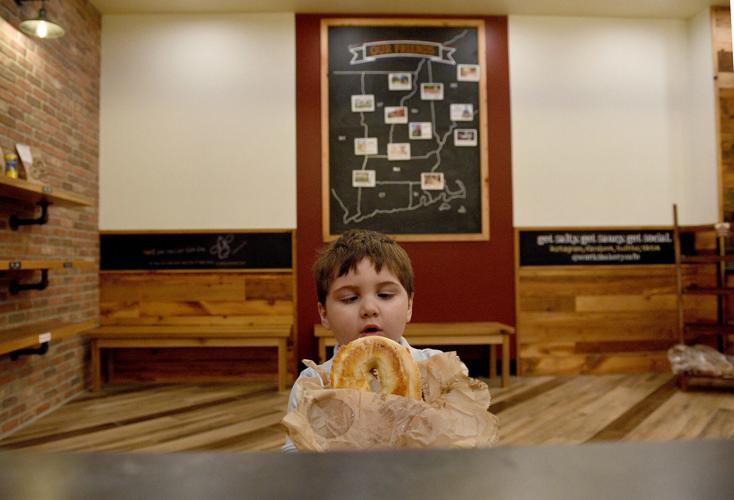Whether the number of locally made electric vehicles (EVs) increases year-on-year remains murky as domestic car sales have slumped since the start of the year. Manufacturers of both internal combustion engine (ICE) vehicles and EVs, especially those from China that invested in Thailand to benefit from the growing EV market, are adjusting their production plans given the sluggish industry here. Local auto parts manufacturers are bearing the brunt as demand from car assembly plants declines.
The Explainer looks into how EV companies and auto parts makers are dealing with the slump, which shows no signs of abating as Thailand is plagued with high household debt and weak consumer purchasing power. Q: How have EV manufacturers responded to the gloomy market? EV companies participating in the state's incentive scheme dubbed EV3.0 called on the government to ease requirements to produce such vehicles in Thailand.

Under EV3.0, which was meant to promote battery EV (BEV) consumption and production between 2022 and 2023, EV companies were granted lower excise tax and import duties, as well as subsidies to support their sales, in exchange for a commitment to assemble BEVs locally from 2024. Authorities provided subsidies of up to 150,000 baht for BEVs priced less than 2 million baht, and up to 18,000 baht for electric motorcycles priced less than 150,000 baht.
Companies beginning to produce BEVs in 2024 are committed to a 1:1 ratio target, meaning they must produce one BEV domestically for every EV they import. The ratio increases to 1.5 locally produced BEV for each imported BEV if they begin production in 2025.
However, because of the stagnant car market, the National EV Policy Committee resolved last year to relax these conditions at the request of car companies. Manufacturers are not required to meet the BEV production targets in 2024 or 2025. They can manufacture cars under new targets of 1:2 in 2026 or 1:3 in 2027, but they are not awarded subsidies until they achieve the manufacturing targets, said Narit Therdsteerasukdi, secretary of the committee chaired by the prime minister.
The 1:2 and 1:3 ratios are set under an EV incentive package known as EV3.5, meant to propel EV industry growth between 2024 and 2027. The committee allowed automakers to adjust their production to cope with the impact of sluggish domestic auto sales, which could lead to a supply glut, worsening a price war started by some EV manufacturers, said Mr Narit.
The two EV schemes were joined by 26 manufacturers, with many of them required to produce a combined 114,000 BEVs locally in 2024 under the EV3.0 scheme. "But they managed to produce only 16,000 units last year," said Suphot Sukphisarn, chairman of the Auto Parts Industry Club of the Federation of Thai Industries (FTI).
The low output was attributed to the impact of plunging domestic auto sales of 26% year-on-year to 572,675 units in 2024, the lowest since 2010, as prospective buyers faced difficulties being approved for auto loans amid the high level of household debt. Banks and car financing companies are more cautious about granting loans, concerned about non-performing loans in the automotive sector as economic growth slows. "It is difficult to estimate how many BEVs will be produced this year because the numbers depend greatly on economic conditions, which are not healthy," said Mr Suphot.
During the first two months of this year, loan rejections caused a decline in auto sales of 9.5% year-on-year to 97,395 vehicles, with BEV sales dipping by 0.12% to 14,558 vehicles, comprising 14.
9% of total sales, according to the FTI's Automotive Industry Club. Total auto production also plunged by 19.2% year-on-year to 222,590 units, though BEV production soared by 175% to 3,907 units, up from 1,421 units year-on-year.
Q: How will auto parts makers survive? Parts makers, struggling with the combined impact of technological disruptions and a stagnant market, are encouraged to upgrade their skills or consider diversifying into new industries. Being adept at manufacturing parts for ICE cars is no longer sufficient to survive, said Mr Suphot. These companies need to learn electric mobility technology to produce and sell EV components, he said.
The Auto Parts Industry Club is talking with seven Chinese EV makers about their plans to buy 17 different locally made EV components, said Mr Suphot. Among these EV makers is Chongqing-based Changan Automobile, which announced last year it would start production with 60% local content, increasing to 90% in the future. The firm said it wants to buy EV components such as high-voltage harnesses, exterior door handles, die-cast cross car beams, intelligent thermal systems, and external door mirrors.
Many companies can produce parts for air conditioners, electrical circuit breakers and inverters, but they may take 1-2 years to develop their know-how to produce parts designed specifically for EVs, said Mr Suphot. "We joined hands with Chinese EV companies to help local parts makers enhance their technological knowledge to serve the EV industry," he said. Auto parts makers are also advised to seek new opportunities by embarking on businesses outside the automotive industry.
The Thailand Automotive Institute (TAI) signed a memorandum of understanding with the Rail Technology Research and Development Agency, a public organisation, on cooperation to support railway and mass transit projects in Thailand. The TAI hopes this cooperation will pave the way for parts manufacturers to adjust their production to serve railway development. Authorities will support auto parts makers who want to embark on this new business, said Kriengsak Wongpromrat, president of the TAI.
The FTI earlier suggested encouraging parts makers to consider entering the medical device industry. Many of them can apply their skills to produce medical products, including single-use devices such as test kits to diagnose illnesses and durable items such as wheelchairs and hospital beds, noted the federation..
Business

Is the EV sector losing its drive?

Whether the number of locally made electric vehicles (EVs) increases year-on-year remains murky as domestic car sales have slumped since the start of the year.















